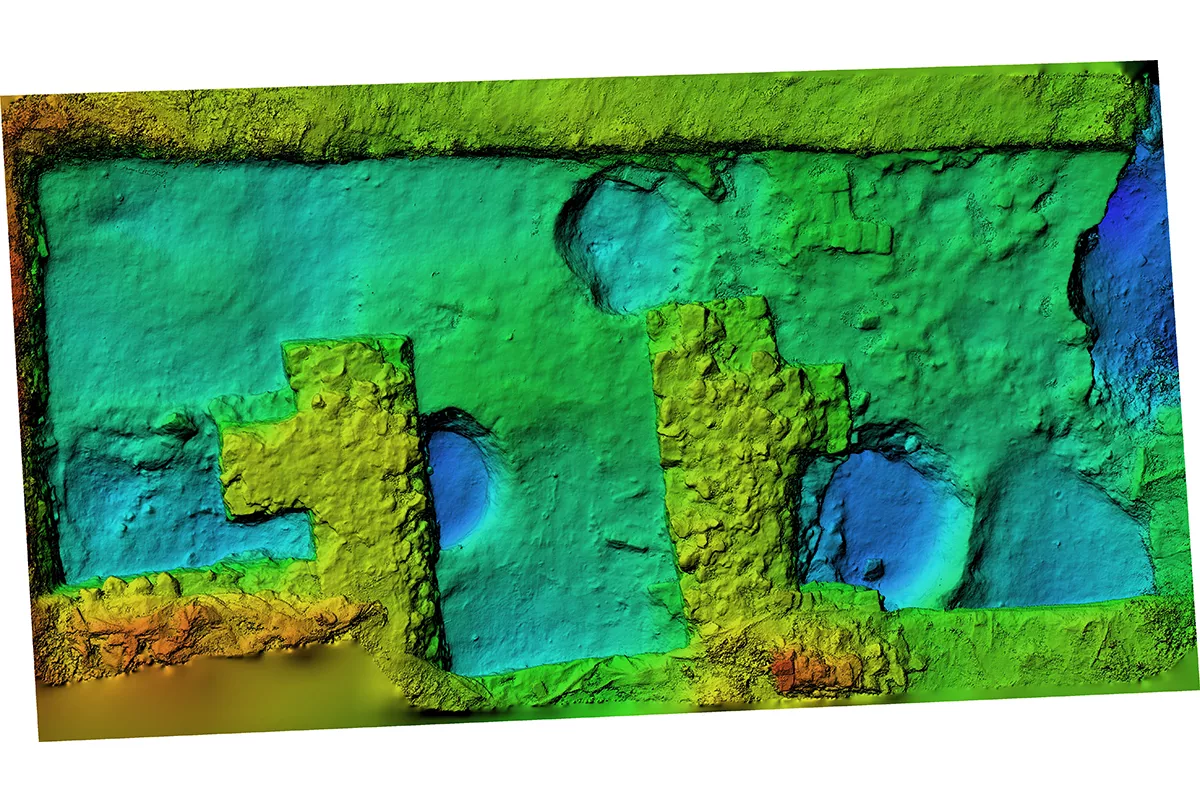At the request of the Dombóvár Town Council, excavation of the former residence of the Domba family has continued this year. The primary goal of the fieldwork carried out under the leadership of Adrián Berta, a young fellowship researcher at the Institute of Archeology of the ELKH Research Centre for the Humanities, is to continue the excavation of the southern wing and the western inner tower started in previous years, as well as the commencement of a study of the settlement adjacent to the castle based on the results of geophysical research carried out in the autumn of 2019.
-

- Forrás: BTK Régészeti Intézet
During the planning work on the medieval and early modern site which has been taking place since 2014, the extent of the former castle, its main construction periods and its characteristic stratigraphic conditions have also been clarified. The area of the fortress, including the surrounding moat (for now, the width of the latter can only be determined on the basis of aerial photographs), is 3,500 m2 in total. Between 2014 and 2020, six research trenches, three probes and fifteen sections were used in the area of the demolished castle, mainly at the points where data on the floor plan of the castle was expected to be found. Systematic excavation of the eastern side of the south wing of the building has also begun, with the aim of obtaining the archaeological and architectural data necessary for the conservation and partial restoration of the south-eastern pillar that still exists today. A total of 781.35 square meters of the former castle have been excavated so far. However, full excavation – up to the level of the alluvial sand that forms the subsoil – has so far been carried out in only five trenches, three sections and two probes, with the excavation process still at different stages. In the autumn of 2019, non-destructive research of the settlement of Váralja also began, during which the remains of the destroyed and underground buildings of the former market town were examined using geophysical methods.
In 2020, the excavation of the courtyard facade entrance of the south wing of the building continued. Large-scale disturbances took place during the Turkish Occupation which led to the destruction of most of the original medieval walking level. In the Ottoman era, large garbage pits were dug in the castle courtyard, where many interesting finds were discovered that provide information on the daily life of the castle guards stationed here. In addition to large quantities of ceramics and animal bones, lead rifles, jewels, bone dice and various metal objects were also found. Research into the surroundings of the late medieval inner tower built in front of the north wing of the building have also continued. The foundation of the almost completely destroyed courtyard façade wall of the northern palace wing built in the first period was identified, as well as rich late medieval and Turkish finds – such as glazed stove tile fragments, windows, fragments of gilded glassware and intact ceramic vessels. Soil drilling was carried out in the northern and eastern sections to determine the dimensions of the now-buried moats.
-

- Forrás: BTK Régészeti Intézet
This year, in addition to the ongoing excavation work in the sections started in previous years, the research was started in a new area: to the west of the castle, based on the results of the 2019 radar surveys, a 5 × 5 meter probe was opened from the rubble of the 16th century a remnant of a hitherto unknown thick fortification wall was found. It stretches for about 15 m from the western outer castle wall, with the remains of a group of posts dug into the ditch at the top. The full extent of the earth-wood structure is still unknown.
The excavation was supported by the Municipality of Dombóvár and the Heritage Protection College of the National Cultural Fund. CHECK Archaeologists and university students participating in the fieldwork came from all over Hungary (Szombathely, Székesfehérvár, Visegrád, Szeged, Békéscsaba, Nyírbátor). The excavation was also attended by high school students and volunteers from Dombóvár.